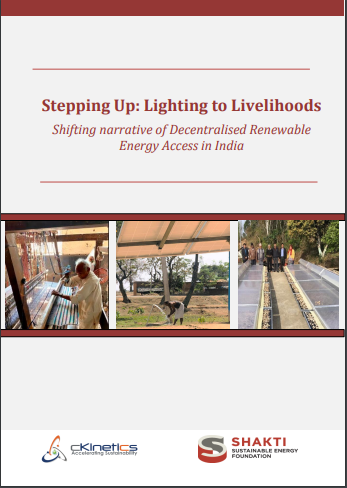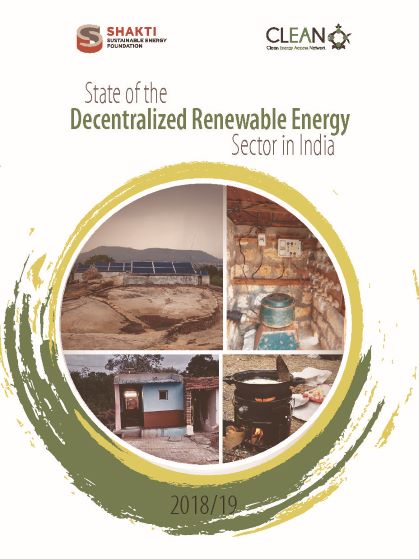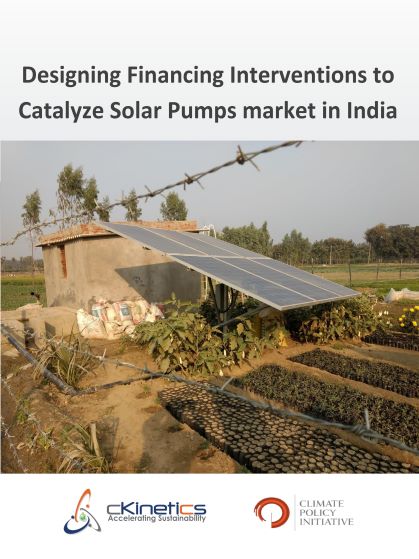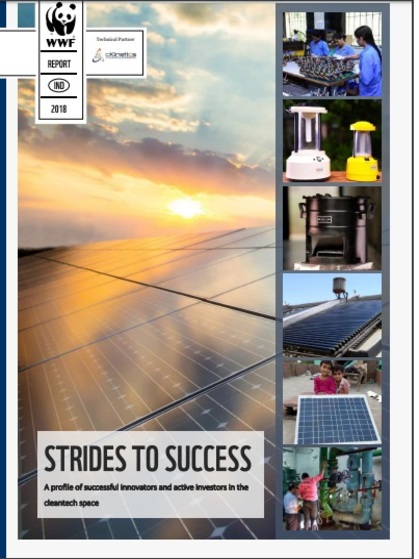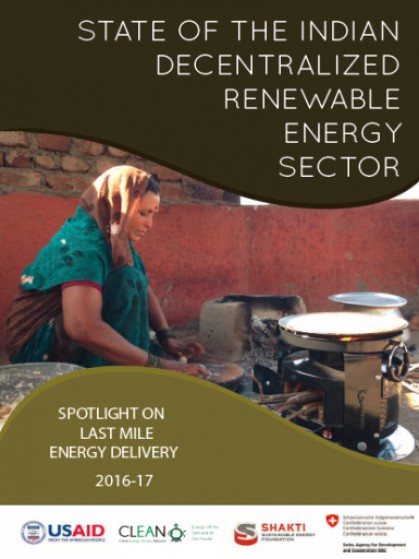Holistic approach to sustainable solar irrigation: A key pivot for doubling farmer incomes
With sustainable agriculture being one of its core verticals, SwitchON Foundation has facilitated solutions in the solar irrigation space by increasing access to finance for solar pumps for farmers, while at the same time developing initiatives to conserve groundwater. Over a recent interaction, Vinay Jaju, Co-Founder of SwitchON, expounded on the organization’s activities, as also shared his reflections on the policy environment around solar powered irrigation and plans for the future.
Docking into the Solar value chain
The agricultural sector accounts for 43% of all employment in India [1]. Irrigation is a key ingredient for bettering farmer livelihoods as it is known to improve yields, increase resistance to changes in rainfall patterns and allow land to support multiple crops [2]. However, on the flip side, the agricultural sector accounts for 90% [3] of all ground water withdrawals for irrigation purposes, which is worsening groundwater scarcity being faced in many parts of India. A well thought out solar powered irrigation model, as demonstrated by SwitchON Foundation, a leading not for profit, can help addresses both aspects - improve farmer incomes, while conserving natural resources.
Recognizing that even as the prices of diesel continue to remain high or even go up in recent years, the cost of solar PV has been consistently on a decline; SwitchON forayed into Solar Pumping as part of their mission to enhance farmer livelihood. With diesel, farmers dropped their produce to two crops due to the high cost involved. By adopting solar pumps, the farmers are able to irrigate 3 crops, which in turn led to increase in productivity and consequently an increase in the incomes as well.
To facilitate farmers’ access to financing for the solar pumps in the East of India (West Bengal and Odisha), SwitchON has established an innovative financing partnership with Axis Bank and RBL Bank wherein it has executed MoUs under which the banks provide loans to marginal farmers backed by a first-loss default guarantee from SwitchON. The loans are typically for 3 HP to 5 HP pumps, with pump costs ranging from INR 0.2 to 0.35 million. SwitchON also acts as the business correspondent for RBL Bank as part of the overall collaboration construct thus crafting the bank’s presence in areas where they have no branches. To make it easier for the farmers, the loan repayment is on a quarterly basis in case of RBL Bank and on a six-monthly basis in case of Axis Bank. Vinay highlights, “Such a plan allows the farmers to repay at their own convenience, not hampered by seasonal challenges.”
Most of these loans are to individual farmers, under a ‘solar water entrepreneurship model,’ wherein in addition to their own usage, the farmer(s) sell water that is irrigated through pumps to neighboring farmers at a mutually determined rate – such irrigation as a service model could be priced on an hourly basis or a lump-sum for the entire season. SwitchON Foundation, on behalf of Axis and RBL, has also been engaged in disbursement of solar pumping loans to joint liability groups, though the number is relatively modest compared to the solar water entrepreneur model, which has proven to be more successful. Such financial interventions are especially needed to facilitate uptake of Solar Pumping - in fact, with these approaches, the business case is much stronger and farmers seek to adopt Solar Pumping even if the subsidies from the Government are not easily accessible at least in West Bengal, one of the states where SwitchON operates.
Groundwater management a key need for sustainable solar irrigation
Even as it seeks to promote solar pumping to enable a reliable irrigation mechanism for farmers, SwitchON is highly cognizant of the pressure that unregulated water extraction can have on groundwater reserves. The North and North East of India, where SwitchON predominantly operates, are hotspots for groundwater depletion and has been typically overexploited for irrigation purposes.
With the aim of addressing groundwater conservation, and yet remain focused on securing farmer incomes through solar irrigation, SwitchON recently launched Program SEWA – Strengthening the Energy, Water, Agriculture Nexus in East India. Under SEWA, three initiatives are being focused on:
- Sustainably Scaling Solar Irrigation
- Community led Ground Water Management
- Revival of Folk Rice and Millets
The first initiative principally is similar to the model outlined above, with just the addition of loans for solar pumps with micro irrigation (1 to 2 HP pumps) in order to ensure water and soil conservation. The second initiative aims at raising the community’s participation and leadership in management of the groundwater in the area; and is focused at creating awareness on proper ways to tap into groundwater as also recharge the same. Finally, the last initiative aims at promoting traditional food systems that are climate resilient.
Image 1: Solar powered pumps set up by SwtichON Foundation
SEWA is SwitchON’s effort at crafting a holistic net water neutral ecosystem and enable sustainable agriculture that increases farmers’ incomes, secures groundwater and eliminates GHG emissions.
Impact generated so far
Even as it is early days, SwitchON has intermediated loans for 50 solar pumps aggregating to approximately INR 15 million. In terms of the impact, the savings from solar irrigation and the additional revenue from more crops and better harvests have helped increase incomes of small farmers by 30% to 100%. The case has been particularly outstanding for farmers who have transitioned into solar water entrepreneurs wherein they earn additional income by selling water to other farmers.
Table 1: Impact created so far
|
Number of farmers impacted |
Impact generated |
||
|
Increased savings |
Increased incomes |
||
|
50 |
750 |
20 to 25% reduction in irrigation costs due to replacement of
expensive diesel pumps |
25% increase in revenue
due to plantation of three crops per annum as opposed to two crops per annum
before solar pumps |
|
25% increase in revenue
due to increased cropping intensity which has led to a 15% increase in
harvest |
|||
Source: SwtichON Foundation
The combination of savings and additional revenue empowers farmers to service their loan for these pumps in an effective manner – well evidenced by the fact that there have been no defaults on the loans for the solar pumps that SwitchON have helped finance so far.
Key policy limitations to be addressed in enabling sustainable solar irrigation
In terms of the solar irrigation policy landscape, PM-KUSUM is the most ambitious scheme to date. For Vinay, the scheme is a welcome step from the government in terms of giving importance to solar pumping technology and recognizing its potential and need to scale. However, he brought up certain apprehensions with regards to its implications. Under Component B of the scheme, the center and the state collectively provide a 60% capital subsidy to install off-grid solar pumps. Contrary to a populist outlook, Vinay strongly feels that an interest-based subsidy – rather than a capital subsidy – should be promoted. Though an interest-based subsidy does not bring down the basic cost of the pump, Vinay is of the view that such a mechanism will avoid misutilization of pumps by farmers. “On the other hand, with interest-based subsidies, only farmers who are genuinely interested in making the purchase will come forward,” says Vinay. He also highlights the need for MNRE, as the nodal ministry for KUSUM, to devise mechanisms in consultation with requisite policy stakeholders at the state level to ensure groundwater conservation can be a central tenet and a key impact indicator for monitoring the scheme performance in different areas. This will help truly empower the scheme provisions requiring farmers to use micro irrigation systems and no pumps being approved for installations in the dark zones, i.e., areas where groundwater is overexploited – some of these are already mentioned in the scheme but needs to be strongly monitored and managed. “These ministries and departments should develop guidelines on micro irrigation and on groundwater and soil conservation or else there could be a severe water crisis,” highlights Vinay.
Vinay also highlighted that the KUSUM scheme should be designed in a way that helps develop the market for solar pumps as it is an economically viable option as compared to diesel pumps. He has two recommendations with regards to enhancing the solar pump market through the scheme. Firstly, he states, “There should be a clear roadmap of how capital subsidies will be phased out year-on-year to avoid minimal disruption of the solar irrigation market.” Secondly, he suggests that a certain amount of the subsidy money should be parked to create a credit guarantee pool or fund for banks. These two provisions will encourage banks to come forward to lend and create banker confidence in this sector to help it scale, a problem that it is currently facing.
While being a strong proponent of the Solar pumping, Vinay also cautions on ensuring the pre-requisites for viability exist before offering the solution to an unsuspecting farmer. In his experience, the feasibility can be assessed based on:
- In case of replacement of diesel pumps, solar pumps would be viable if the annual pumping requirement is at least 1,000 hours.
- With respect to electric pumps, solar pumps would present an economic case if they are connected to the grid and excess power can be sold back to the grid through feed-in-tariffs.
It is only with the above considerations that deployment of a solar pump would make economic sense.
Way forward
SwitchON is quite optimistic and hopes to craft a holistic solar irrigation ecosystem that can be used to scale up successful technology and business models in other parts of India through a network of market players, farmers, financiers and policy makers. Since access to finance is the main barrier to scale for sustainable solar irrigation, SwtichON, through SEWA, aims at introduce innovative finance instruments like partial guarantee funds to leverage higher amounts of financing for the guarantee facility they have in place currently. With a clear focus, the foundation targets to expand in more areas, while ensuring that the technology is adopted based on suitability of location and agricultural practices and is able to deliver benefits to farmers.
____________________________________________________________________________
[1] https://data.worldbank.org/indicator/SL.AGR.EMPL.ZS
[2] http://www.fao.org/3/i9047en/I9047EN.pdf
[3] https://greentribunal.gov.in/Writereaddata/Downloads/59-2012(PB-I)OA3-1-19.pdf
